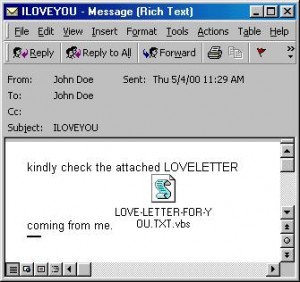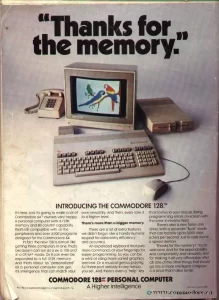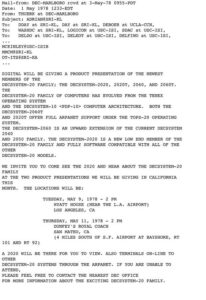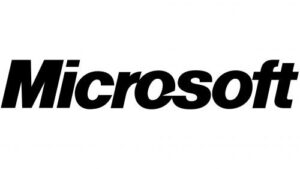Archive for May 2024
“i” is for Apple
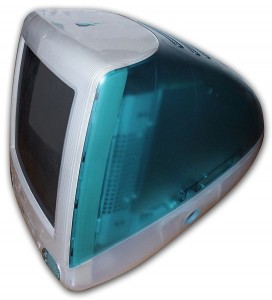
At the Flint Center Theater, the same place where the Macintosh was first unveiled in 1984, Steve Jobs introduces the original iMac. This iMac was later referred to as the “Bondi Blue”, after the color of its case (named for a beach in Australia). According to Jobs, the iMac is “the Internet-age computer for the rest of us.” By reimagining and reintroducing the simplicity of the all-in-one computer that was the hallmark of the original Macintosh 14 years earlier, Apple was banking on the ease-of-use of the iMac to attract many people to the Macintosh platform who wanted to make use of the still emerging Internet. Originally slated to be available in ninety days, it will actually be released on August 15th. In the meantime, Apple will book an unprecedented 150,000 orders before its release, marking the beginning of Apple’s renaissance. With its colorful design, the iMac ended the trend of the beige personal computer and even influenced the design of products outside the computer industry. It also ushered in the era of Apple adding the letter “i” to just about every product it created for a time. But hey, Apple eventually became the world’s most valuable company, so who’s arguing?
I remember helping my uncle buy an original iMac at a computer store in St. Louis (I think it was CompUSA but I don’t remember for certain now). I believe there were only a total of 15 iMacs for sale so we had to get there early to make sure we got one when they officially went on sale. There was a lot of fanfare and excitement in the air. I knew this was a big deal for Apple at the time, but little did I know exactly just how important an event this was in technology history. Plus I was a little jealous of my uncle for being able to get an iMac but at least I would be able to experience it when helping him set it up.
Wolfenstein 3D Blasts Onto Scene

id Software Inc. releases the game Wolfenstein 3D, the original first person shooter game for DOS computers. While it was technically not the first FPS in video game history, Wolfenstein 3D was the game that definitively popularized the genre. Using the shareware model to freely distribute the first of three episodes with the ability to purchase the next two episodes, the game became an instant success, selling 200,000 copies in the first year. The success of Wolfenstein 3D made id Software a household name in the gaming world. They followed up in the next year with the massively popular Doom, which cemented the first person shooter gaming genre and the rest is history.
In addition to being credited with launching the first person shooter genre, Wolfenstein 3D is also widely regarded as proving the viability of and popularizing the shareware distribution model. The game was ported to many different platforms over the years and is still available for purchase to play today.
First American in Space

NASA astronaut Alan Shepard becomes the first American in space when he makes a fifteen minute suborbital flight aboard the Mercury capsule Freedom 7. He reaches an altitude of 115 miles, during which he experiences about five minutes of weightlessness.
Love Stinks
May 4, 2000
The Love Letter computer virus, aka the “ILOVEYOU” bug, spreads to personal computers running Windows around the world in just six hours. Spreading through e-mail, the virus entices victims to open the message with the subject of “ILOVEYOU”. About 2.5 to 3 million PCs will become infected. The cost of system downtime is later estimated at $8.7 billion. It is thought to be the fastest-moving and most widespread virus in history.
Commodore Assets Purchased out of Bankruptcy
German company Escom AG purchases the rights to the name, patents, and intellectual property of Commodore Electronics, which had declared bankruptcy in 1994. Commodore was a pioneer in the personal computing industry, holding some impressive records such as having the best selling computer in history with the Commodore 64, which The Guinness Book of Records estimates about 30 million units were sold over the course of 10 years from 1982 to 1992, the first computer company to have over 50% of the home PC market, and the first company to make over $1 billion in sales. They also created some of the most innovative computers in the early PC market such as the first multimedia computer, the Amiga. Unfortunately for Commodore as it was with many early PC companies, the juggernaut of the IBM-compatible PC combined with poor management was their ultimate undoing.
Dell Founded

Dell Computer Corporation is founded by Michael Dell, running the direct-to-order PC company from his dorm room. Using this innovative direct-to-order model, Dell, Inc. eventually became the largest manufacturer of PCs in the world for many years. Through ups and downs, it is still currently in the top 3 as of 2022 in market share for personal computers.
The First Mass Unsolicited Commercial E-mail, i.e. Spam
Gary Thuerk, a marketing representative for Digital Equipment Corporation, sends out an e-mail promoting an open house for the company’s latest computer systems to 393 recipients on the ARPANET, a precursor to the modern Internet. While this number sounds small by today’s standards, this was all the ARPANET users on the west coast of the United States. Given that this was an unsolicited commercial e-mail, it is now considered the first of its kind. In other words, the first spam message well before the term was coined. It brought a quick and negative response from many users and Thuerk was warned by ARPANET administrators that mass mailings were not an acceptable use of the network. The backlash notwithstanding, the open house was largely successful with over $12 million dollars of DEC equipment being sold. I guess it was better to ask forgiveness than permission in this case!
Microsoft Registers Their Domain Name … Finally
Microsoft registers the microsoft.com domain name. For such a major technology company, notably this was over 6 years after the domain name system was created and the first domain name registered, and over 4 years after competitor Apple registered apple.com. I guess it was no surprise that it took Microsoft another 4 years to recognize the growing importance of the “Internet Tidal Wave“, about a year after the World Wide Web was already gaining mainstream popularity and most of the rest of the technology industry were already on board.
Microsoft Acts Mousey
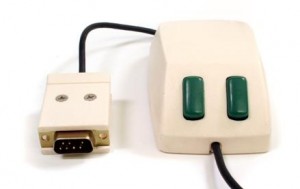
Microsoft introduces the Microsoft Mouse for IBM and IBM-compatible PCs. The mouse featured two green buttons and is available by itself or will later be bundled with the new Microsoft Word software, which Microsoft would release in September. Because of the green buttons, the mouse was nicknamed the “Green-Eyed Mouse”, which may have been a fitting name given it’s similarity to the Shakesperian phrase “green-eyed monster” to describe jealously. It was no secret Bill Gates was very envious of what Apple was creating with the Lisa and later Macintosh computers and their mouse-driven interfaces. Microsoft will manufacture nearly one hundred thousand units of their first mouse, but will only sell five thousand before introducing a second, more popular version in 1985.
Microsoft would go on to create a very successful line of mice and other computing peripherals over the years, but almost ironically Microsoft announced in April of 2023, nearly 40 years later, that they would end the production of Microsoft-branded peripherals and focus on their Surface-branded peripherals. This came months after Microsoft announced a 30% year-over-year drop in revenue from devices, cut 10,000 jobs, and announced “changes to their hardware portfolio”.
GPS Gets Less Selective
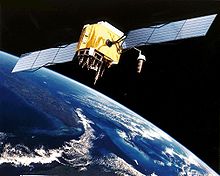
President Bill Clinton releases a statement announcing that the U.S. government will remove Selective Availability from its Global Positioning System at midnight, improving the accuracy of civilian GPS devices from 100 meters to 20 meters. Originally created to impede hostile forces from taking advantage of the GPS system, pressure mounted from many areas to eliminate Selective Availability and make GPS more accurate for civilian purposes. Initially set to be disabled in sometime 2006, it happened on this day 6 years earlier than planned because the U.S. military had developed a new method of denying GPS to hostile forces in a specific areas without affecting the rest of the world or its own systems. This action paved the way for the proliferation of GPS usage for accurate navigation functions, such as the turn-by-turn apps we use today on our smartphones.

